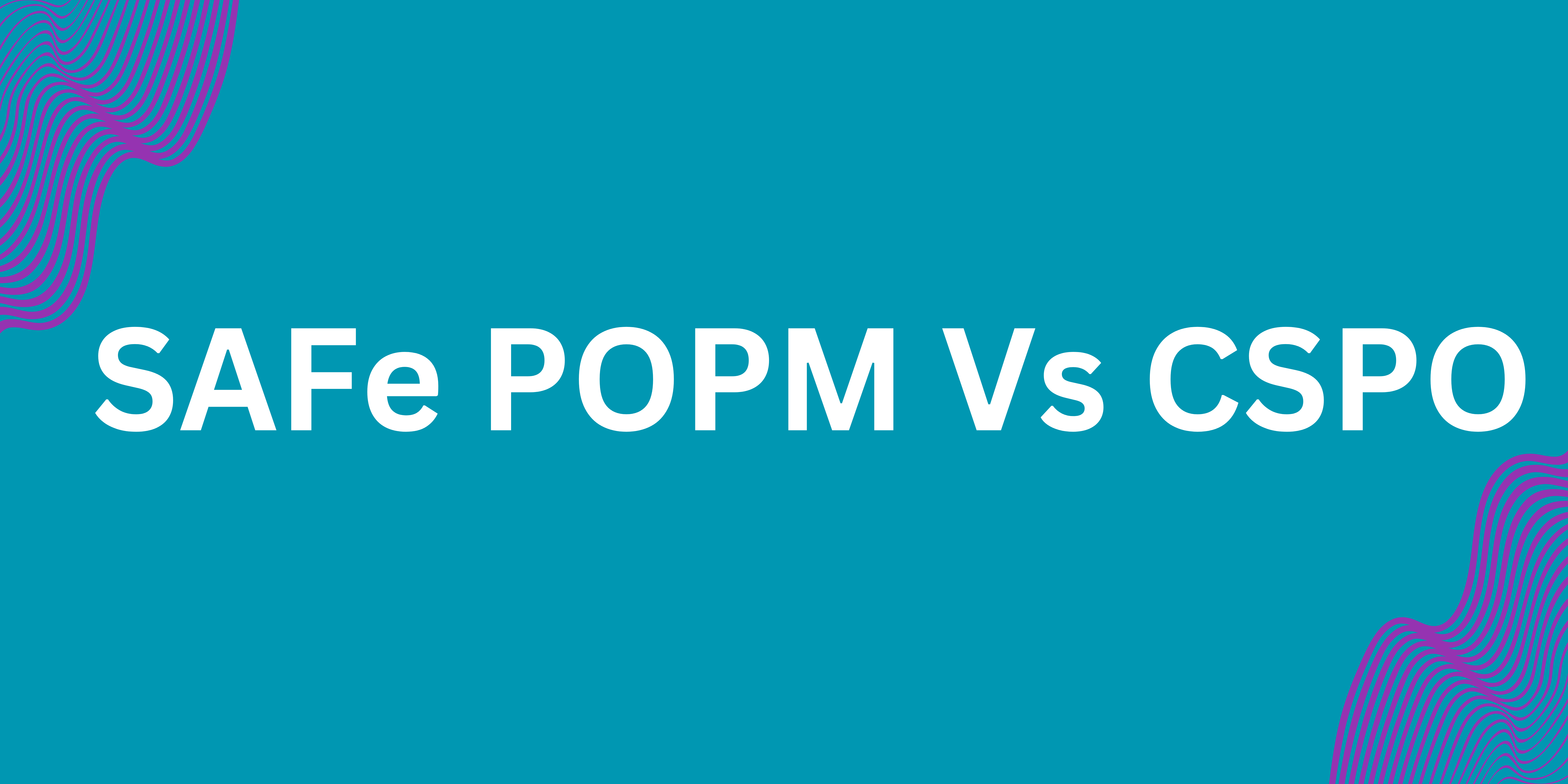05 JAN 2020
By AxiGlobe

Product ownership is a critical role in agile frameworks, focused on maximizing the value of product development. If you're considering a career in product ownership, two well-known certifications stand out: SAFe® Product Owner/Product Manager (POPM) and Certified Scrum Product Owner (CSPO). Both certifications validate your skills as a product owner, but they cater to different organizational needs and scales.
In this blog, we’ll compare the SAFe POPM and CSPO certifications, explore their core differences, and help you decide which one aligns best with your career goals.
While both certifications target product ownership skills, they operate at different levels of complexity and scale.
SAFe POPM: Scaling Agile Across the Enterprise
The SAFe POPM certification is ideal if you:
CSPO: Focusing on Scrum Teams
The CSPO is ideal if you:
Both SAFe POPM and CSPO have minimal prerequisites, but they differ in structure and requirements.
SAFe POPM Prerequisites:
CSPO Prerequisites:
SAFe POPM Skills:
The SAFe POPM certification emphasizes skills necessary for working in a scaled environment. Key focus areas include:
CSPO Skills:
The CSPO focuses on foundational skills for product ownership in a Scrum environment, including:
The certification processes differ for SAFe POPM and CSPO, mainly due to the SAFe POPM exam requirement.
SAFe POPM Certification Process:
CSPO Certification Process:
Both certifications can lead to enhanced career opportunities, but they target slightly different roles and organizational scales.
SAFe POPM Career Path and Salary:
CSPO Career Path and Salary:
Your choice between SAFe POPM and CSPO depends on your career goals, work environment, and aspirations:
Both SAFe POPM and CSPO are valuable certifications for product ownership roles, each catering to different scales and frameworks. If your career path involves managing products at the team level, CSPO offers foundational skills that you’ll need. On the other hand, if you’re aiming to work within scaled agile environments in a large organization, SAFe POPM provides the advanced skills required for aligning product goals with enterprise strategy.
By understanding your current role and long-term goals, you can choose the certification that aligns best with your career aspirations and sets you up for success in the dynamic field of agile product management.
Oh! We recently winded up one batch, but no worries. We have a few more in the coming weeks.
Just opt-in for the updates about dates, prices, and curriculum with your preferences!
We keep you posted about the course.
©️2020 - 2025 AxiGlobe All Rights Reserved. The certification names are the trademarks of the respective authorised bodies
 USA
USA
Disclaimer :
Profession Scrum Master (PSM-I®, PSM-II®, PSM-III®), Profession Scrum Product Owner (PSPO-I®, PSPO-II®, PSPO-III®), Profession Scrum Developer (PSD-I®), Scaled Professional Scrum(SPS®),Professional Scrum With Kanban(PSK-I®) , Prove your knowledge of Professional Agile Leadership(PAL-I®), Prove your knowledge of Evidence-Based Management™ (PAL-EBM®), Prove Your Scrum with User Experience Knowledge
(PSU-I®) and Professional Scrum Trainer(PST®) are registered trademarks of Scrum.org®. AxiGlobe INC is a Professional Training Network member of Scrum.org®.
Certified Business Analysis Professional (CBAP®), Certification of Capability in Business Analysis(CCBA®), Entry Certificate in Business Analysis(ECBA®), Agile Analysis Certification(AAC®), Certification in Business Data Analytics(CBDA®), Certificate in Cybersecurity Analysis(CCA®), Certificate in Product Ownership Analysis(CPOA®) are registered trademarks of International Institute of Business Analysis(IIBA®). AxiGlobe INC is an Premier Level Endorsed Education Provider of IIBA®.
SAFe Agilist Certification (SA®), SAFe Program Consultant Certification (SPC®),SAFe Program Consultant Trainer Certification (SPCT®),SAFe Practitioner Certification(SP®),SAFe Release Train Engineer Certification (RTE®),SAFe Scrum Master Certification (SSM®),SAFe Advanced Scrum Master Certification (SASM®),SAFe DevOps Practitioner Certification(SDP®),Agile Product Manager Certification (APM®),Lean Portfolio Manager Certification (LPM®),Product Owner / Product Manager Certification (POPM®),SAFe Architect Certification (ARCH®),Agile Software Engineer Certification (ASE®) and SAFe Government Practitioner Certification (SGP®), Scaled Agile Framework® and SAFe® are registered trademarks of Scaled Agile, Inc.®. AxiGlobe INC is a Silver Partner of Scaled Agile, Inc®.
DevOps Foundation®, DevOps Leader®, SRE Foundation℠, SRE Practitioner℠, DevSecOps Foundation℠, Continuous Testing Foundation℠, Certified Agile Service Manager®, Continuous Delivery Ecosystem Foundation℠ and Value Stream Management Foundation® are registered trademarks of DevOps Institute. AxiGlobe INC is a Registered Education Partner (REP) of the DevOps Institute (DOI) ®. Read more...
